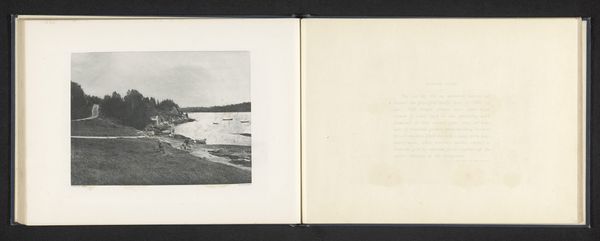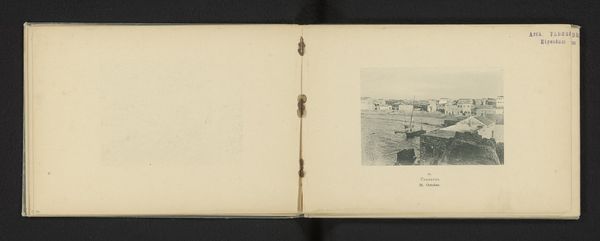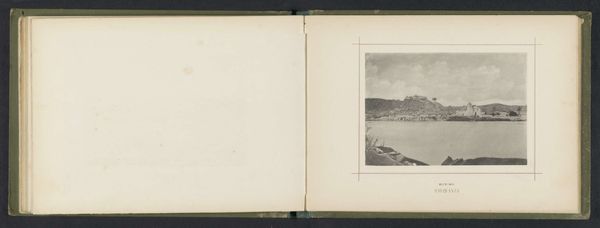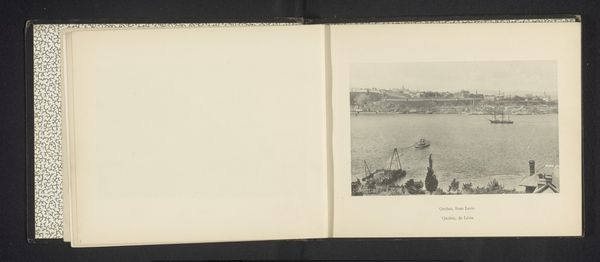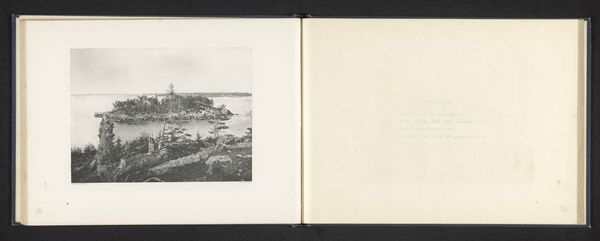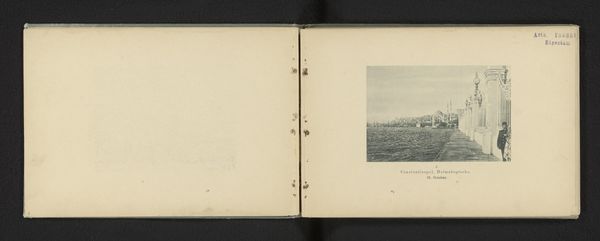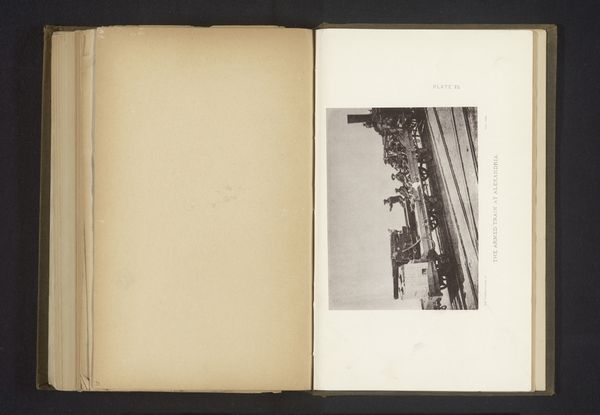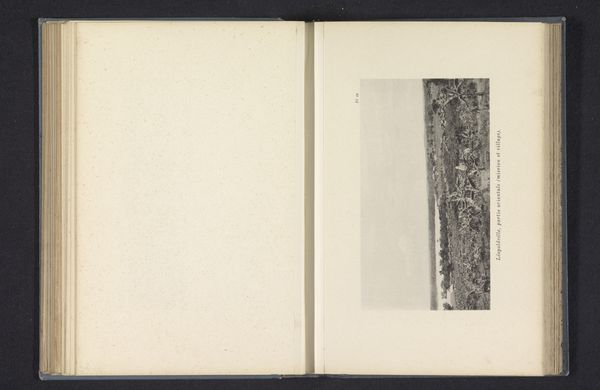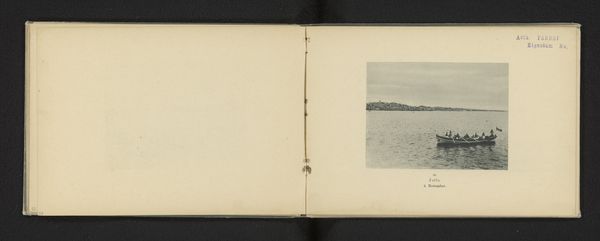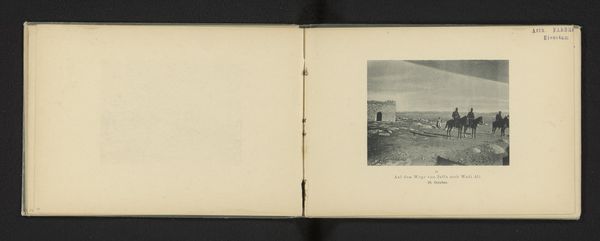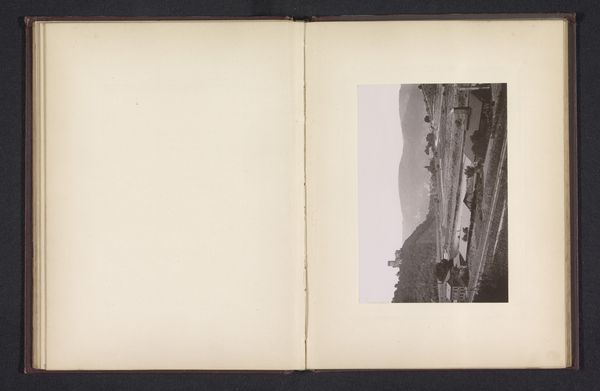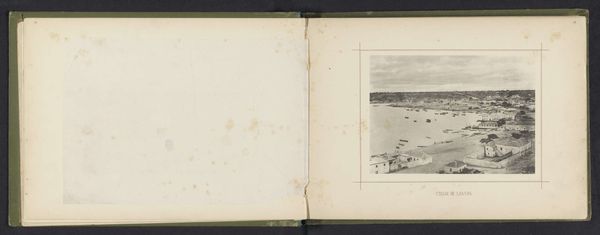
print, photography, gelatin-silver-print
# print
#
asian-art
#
landscape
#
photography
#
orientalism
#
gelatin-silver-print
Dimensions: height 105 mm, width 151 mm
Copyright: Rijks Museum: Open Domain
Curator: Looking at "View of the Beach with Boats at Enoshima" captured between 1895 and 1905 by Kōzaburō Tamamura, it is immediately the textural contrasts that hold my attention. The rough textures of the beach are wonderfully rendered against the smoother expanse of the water. What strikes you first? Editor: It evokes a sense of stillness despite depicting laborers—there's a quietness, emphasized by the hazy atmosphere, creating almost dreamlike image. Curator: Exactly. Let’s consider the context: Tamamura was a key figure in Yokohama photography, producing many images of Japan aimed at the tourist trade. We can observe here the skillful use of the gelatin-silver printing process and hand-applied color, aimed for Western consumers eager for a romanticized, orientalist perspective. Editor: From a formalist point of view, the composition uses the rule of thirds, the island mass balancing the active figures. It allows your eye to drift between the labor on the sand to a point in the distance that blends seamlessly. Curator: Note also the staging and arrangement. While purporting to show an authentic scene, the very deliberate placement of figures and vessels reflects a construction designed to meet the aesthetic expectations of the Western market. How do you interpret its message? Editor: The tonal range directs the viewer's focus from the detailed foreground up the beach. One can follow their visual gaze towards the atmospheric and softly contrasting island on the horizon. There is something sublime about the artist's ability to frame labor as peace and calm. Curator: Ultimately, it reminds us of how images both reflect and construct cultural narratives. The production and consumption of this artwork highlights the economic realities shaping artistic creation and cultural exchange. It is an item meant to generate tourism revenue more so than an item meant for a collector to appreciate, let's say like one of Hiroshige's Ukiyo-e pieces. Editor: And for me, it speaks to how universal and timeless those aesthetic concerns truly are, to capture both reality and the subjective gaze.
Comments
No comments
Be the first to comment and join the conversation on the ultimate creative platform.
